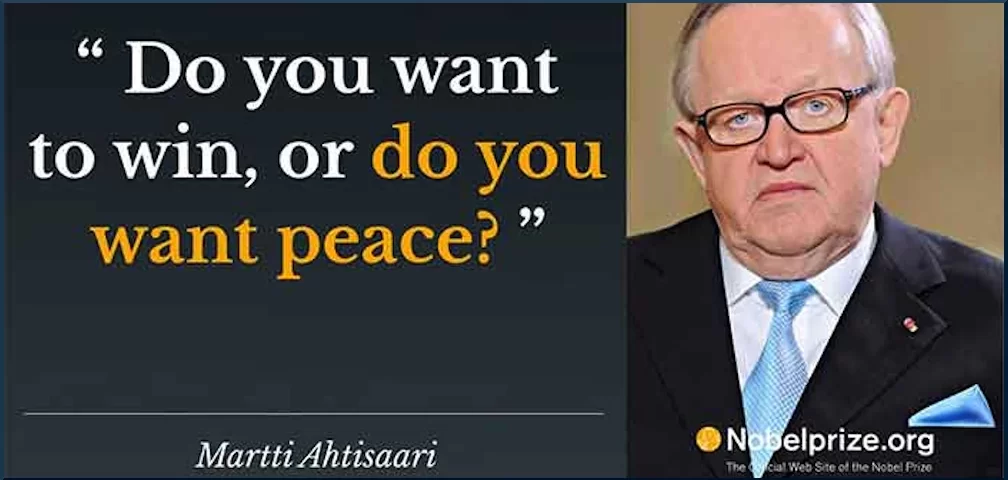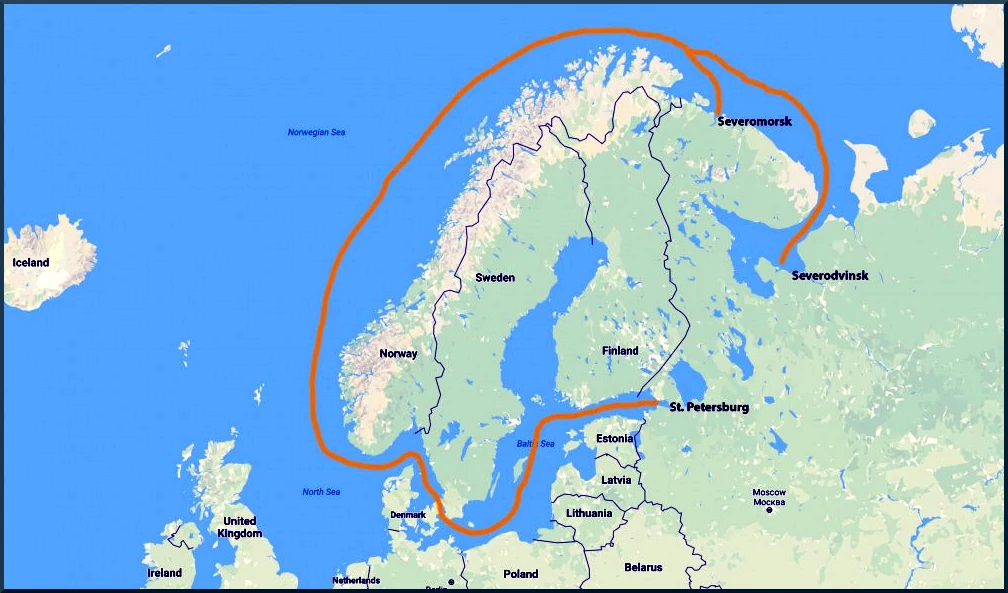by Medea Benjamin and Nicolas J. S. Davies, April 12, 2023
On April 4, 2023, Finland officially became the 31st member of the NATO military alliance. The 830-mile border between Finland and Russia is now by far the longest border between any NATO country and Russia, which otherwise borders only Norway, Latvia, Estonia, and short stretches of the Polish and Lithuanian borders where they encircle Kaliningrad.
In the context of the not-so-cold war between the United States, NATO and Russia, any of these borders is a potentially dangerous flashpoint that could trigger a new crisis, or even a world war. But a key difference with the Finnish border is that it comes within about 100 miles of Severomorsk, where Russia’s Northern Fleet and 13 of its 23 nuclear-armed submarines are based. This could well be where World War III will begin, if it has not already started in Ukraine.
In Europe today, only Switzerland, Austria, Ireland and a handful of other small countries remain outside NATO. For 75 years, Finland was a model of successful neutrality, but it is far from demilitarized. Like Switzerland, it has a large military, and young Finns are required to perform at least six months of military training after they turn 18. Its active and reserve military forces make up over 4% of the population – compared with only 0.6% in the U.S. – and 83% of Finns say they would take part in armed resistance if Finland were invaded.
Only 20 to 30% of Finns have historically supported joining NATO, while the majority have consistently and proudly supported its policy of neutrality. In late 2021, a Finnish opinion poll measured popular support for NATO membership at 26%. But after the Russian invasion of Ukraine in February 2022, that jumped to 60% within weeks and, by November 2022, 78% of Finns said they supported joining NATO.
As in the United States and other NATO countries, Finland’s political leaders have been more pro-NATO than the general public. Despite long-standing public support for neutrality, Finland joined NATO’s Partnership for Peace program in 1997. Its government sent 200 troops to Afghanistan as part of the UN-authorized International Security Assistance Force after the 2001 U.S. invasion, and they remained there after NATO took command of this force in 2003. Finnish troops did not leave Afghanistan until all Western forces withdrew in 2021, after a total of 2,500 Finnish troops and 140 civilian officials had been deployed there, and two Finns had been killed.
A December 2022 review of Finland’s role in Afghanistan by the Finnish Institute of International Affairs found that the Finnish troops “repeatedly engaged in combat as part of the military operation that was now led by NATO and had become a party in the conflict,” and that Finland’s proclaimed objective, which was “to stabilize and support Afghanistan to enhance international peace and security” was outweighed by “its desire to maintain and strengthen its foreign and security policy relations with the U.S. and other international partners, as well as its effort to deepen its collaboration with NATO.”
In other words, like other small NATO-allied countries, Finland was unable, in the midst of an escalating war, to uphold its own priorities and values, and instead allowed its desire “to deepen its collaboration” with the United States and NATO to take precedence over its original aim of trying to help the people of Afghanistan to recover peace and stability. As a result of these confused and conflicting priorities, Finnish forces were drawn into the pattern of reflexive escalation and use of overwhelming destructive force that have characterized U.S. military operations in all its recent wars.
As a small new NATO member, Finland will be just as impotent as it was in Afghanistan to affect the momentum of the NATO war machine’s rising conflict with Russia. Finland will find that its tragic choice to abandon a policy of neutrality that brought it 75 years of peace and look to NATO for protection will leave it, like Ukraine, dangerously exposed on the front lines of a war directed from Moscow, Washington and Brussels that it can neither win, nor independently resolve, nor prevent from escalating into World War III.
Finland’s success as a neutral and liberal democratic country during and since the Cold War has created a popular culture in which the public are more trusting of their leaders and representatives than people in most Western countries, and less likely to question the wisdom of their decisions. So the near unanimity of the political class to join NATO in the wake of the Russian invasion of Ukraine faced little public opposition. In May 2022, Finland’s parliament approved joining NATO by an overwhelming 188 votes to eight.
But why have Finland’s political leaders been so keen to “strengthen its foreign and security policy relations with the U.S. and other international partners,” as the Finland in Afghanistan report said? As an independent, neutral, but strongly armed military nation, Finland already meets the NATO goal of spending 2% of its GDP on the military. It also has a substantial arms industry, which builds its own modern warships, artillery, assault rifles and other weapons.
NATO membership will integrate Finland’s arms industry into NATO’s lucrative arms market, boosting sales of Finnish weapons, while also providing a context to buy more of the latest U.S. and allied weaponry for its own military and to collaborate on joint weapons projects with firms in larger NATO countries. With NATO military budgets increasing, and likely to keep increasing, Finland’s government clearly faces pressures from the arms industry and other interests. In effect, its own small military-industrial complex doesn’t want to be left out.
Since it began its NATO accession, Finland has already committed $10 billion to buy American F-35 fighters to replace its three squadrons of F-18s. It has also been taking bids for new missile defense systems, and is reportedly trying to choose between the Indian-Israeli Barak 8 surface-to-air missile system and the U.S.-Israeli David’s Sling system, built by Israel’s Raphael and the U.S.’s Raytheon.
Finnish law prohibits the country from possessing nuclear weapons or allowing them in the country, unlike the five NATO countries that store stockpiles of U.S. nuclear weapons on their soil – Germany, Italy, Belgium, Holland and Turkey. But Finland submitted its NATO accession documents without the exceptions that Denmark and Norway have insisted on to allow them to prohibit nuclear weapons. This leaves Finland’s nuclear posture uniquely ambiguous, despite President Sauli Niinistö’s promise that “Finland has no intention of bringing nuclear weapons onto our soil.”
The lack of discussion about the implications of Finland joining an explicitly nuclear military alliance is troubling, and has been attributed to an overly hasty accession process in the context of the war in Ukraine, as well as to Finland’s tradition of unquestioning popular trust in its national government.
Perhaps most regrettable is that Finland’s membership in NATO marks the end of the nation’s admirable tradition as a global peacemaker. Former Finnish President Urho Kekkonen, an architect of the policy of cooperation with the neighboring Soviet Union and a champion of world peace, helped craft the Helsinki Accords, a historic agreement signed in 1975 by the United States, the Soviet Union, Canada and every European nation (except Albania) to improve detente between the Soviet Union and the West.
Finnish President Martti Ahtisaari continued the peacemaking tradition and was awarded the Nobel Peace Prize in 2008 for his critical efforts to resolve international conflicts from Namibia to Aceh in Indonesia to Kosovo (which was bombed by NATO).
Speaking at the UN in September 2021, Finnish President Sauli Niinistö seemed anxious to follow this legacy. “A willingness of adversaries and competitors to engage in dialogue, to build trust, and to seek common denominators – that was the essence of the Helsinki Spirit. It is precisely that kind of a spirit that the entire world, and the United Nations, urgently needs,” he said. “I am convinced that the more we speak about the Helsinki Spirit, the closer we get to rekindling it – and to making it come true.“
Of course, it was Russia’s decision to invade Ukraine that drove Finland to abandon the “Helsinki Spirit” in favor of joining NATO. But if Finland had resisted the pressures on it to rush into NATO membership, it could instead now be joining the “Peace Club” being formed by Brazilian President Lula to revive negotiations to end the war in Ukraine. Sadly for Finland and the world, it looks like the Helsinki Spirit will have to move forward–without Helsinki.
Medea Benjamin and Nicolas J. S. Davies are the authors of War in Ukraine: Making Sense of a Senseless Conflict, published by OR Books in November 2022.
Medea Benjamin is the cofounder of CODEPINK for Peace, and the author of several books, including Inside Iran: The Real History and Politics of the Islamic Republic of Iran.
Nicolas J. S. Davies is an independent journalist, a researcher with CODEPINK and the author of Blood on Our Hands: The American Invasion and Destruction of Iraq.

